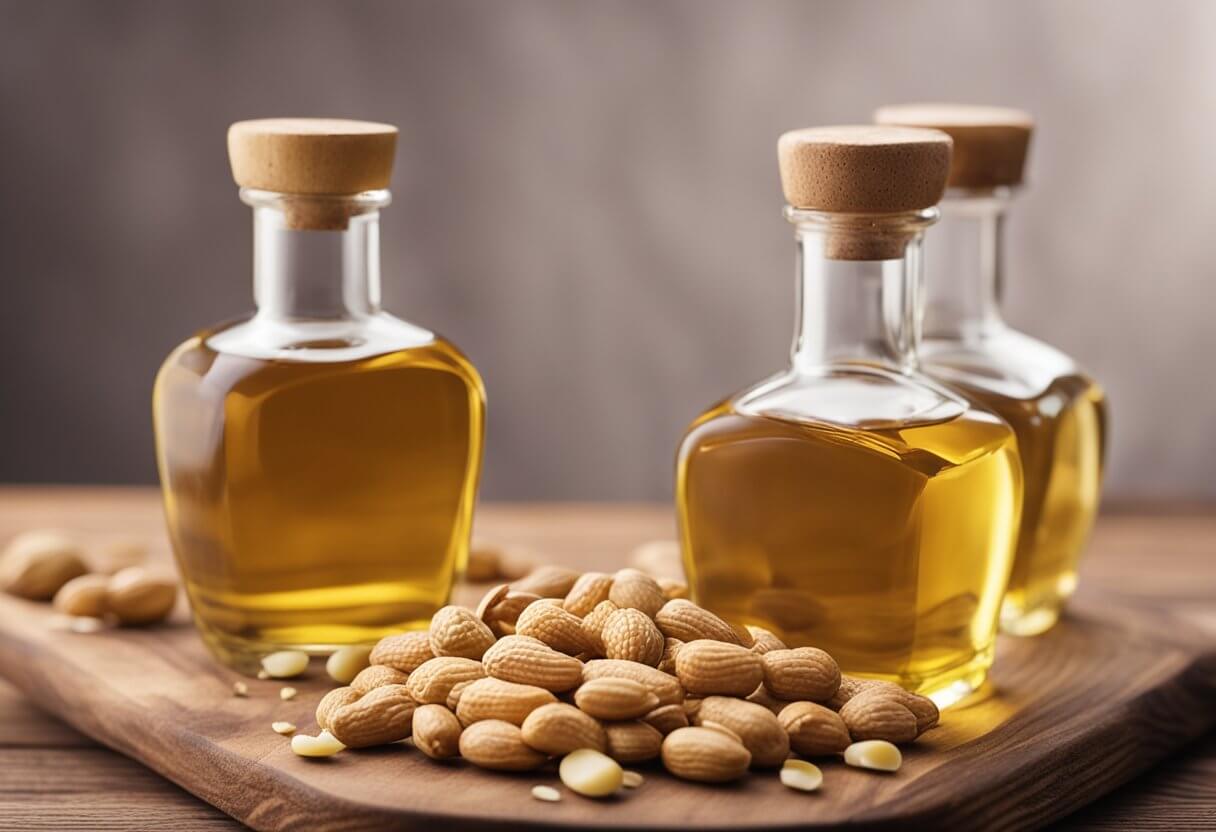Sesame Oil vs Peanut Oil
Sesame oil is made from sesame seeds and has a rich, nutty flavor. It’s commonly used in Asian dishes, such as stir-fries and marinades. Peanut oil, on the other hand, is made from peanuts and has a mild, nutty taste. It’s also a popular choice for frying because of its high smoke point. While both oils have their own distinct flavor profiles, they also have different nutritional benefits.
So, which one should you choose? The answer depends on your personal preferences and cooking needs. In the next sections, we’ll take a closer look at the differences between sesame oil and peanut oil, including their smoke points, nutritional values, and flavor profiles. By the end of this article, you’ll have a better understanding of which oil is right for you.
Brief Overview of the Oils
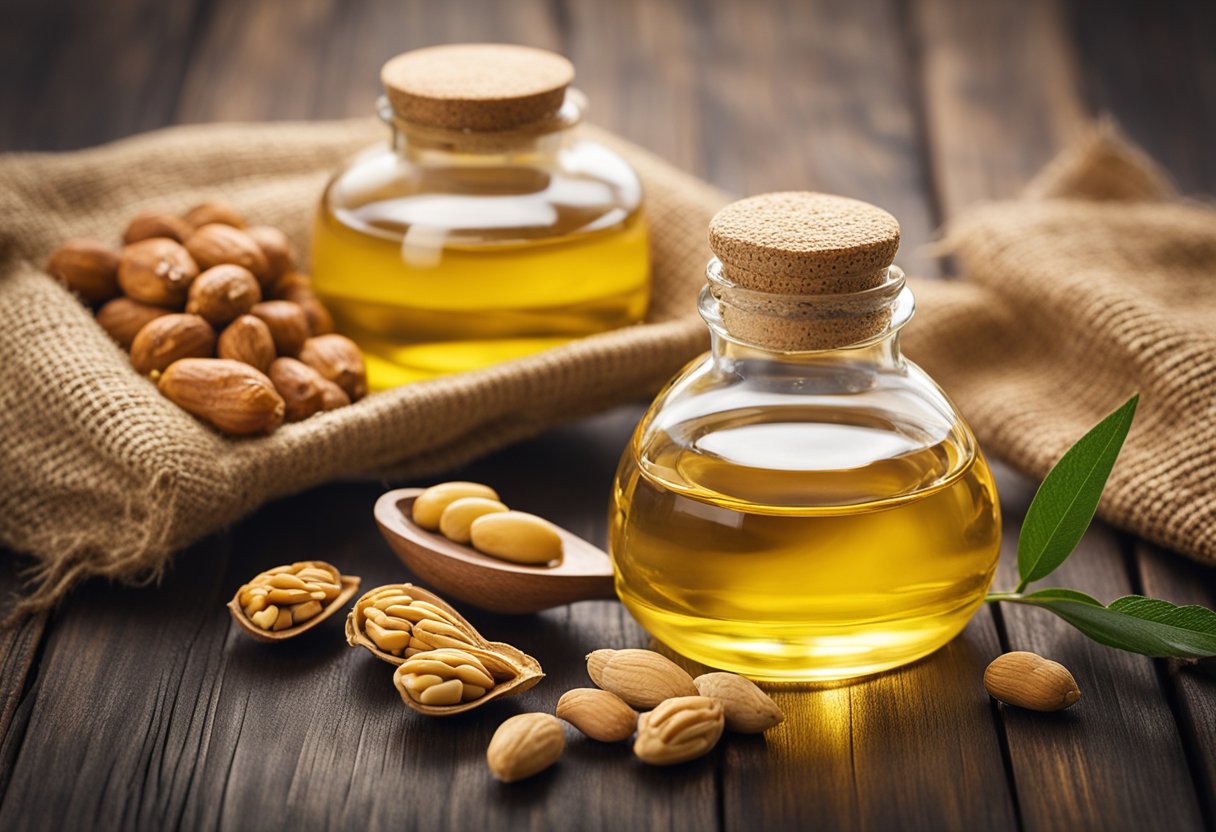
When it comes to cooking oils, there are many options available in the market. Sesame oil and peanut oil are two popular oils that are widely used in Asian cuisine. Both oils have unique flavors, nutritional values, and cooking properties. In this section, we will provide you with a brief overview of these oils to help you decide which one is right for your cooking needs.
Sesame Oil
Sesame oil is a flavorful oil that is extracted from sesame seeds. It has a nutty taste and a strong aroma that can add depth and richness to your dishes. Sesame oil is high in polyunsaturated and monounsaturated fats, which are considered heart-healthy fats. It also contains antioxidants and vitamin E, which can help protect your body against free radicals.
Sesame oil has a low smoke point, which means that it is not suitable for high-temperature cooking methods like deep-frying. It is best used for stir-frying, sautéing, and dressing salads. Sesame oil is commonly used in Asian cuisine, especially in Chinese, Korean, and Japanese dishes.
Peanut Oil
Peanut oil, also known as groundnut oil, is a mild-tasting oil that is extracted from peanuts. It has a neutral flavor that can complement a wide range of dishes. Peanut oil is high in monounsaturated and polyunsaturated fats, which are good for heart health. It also contains vitamin E and resveratrol, which are antioxidants that can help protect your cells from damage.
Peanut oil has a high smoke point, which makes it ideal for high-temperature cooking methods like deep-frying. It is commonly used in Asian cuisine, particularly in Thai and Indian dishes. Peanut oil is also a popular choice for frying foods like chicken, fish, and French fries.
Difference in Smoke Point
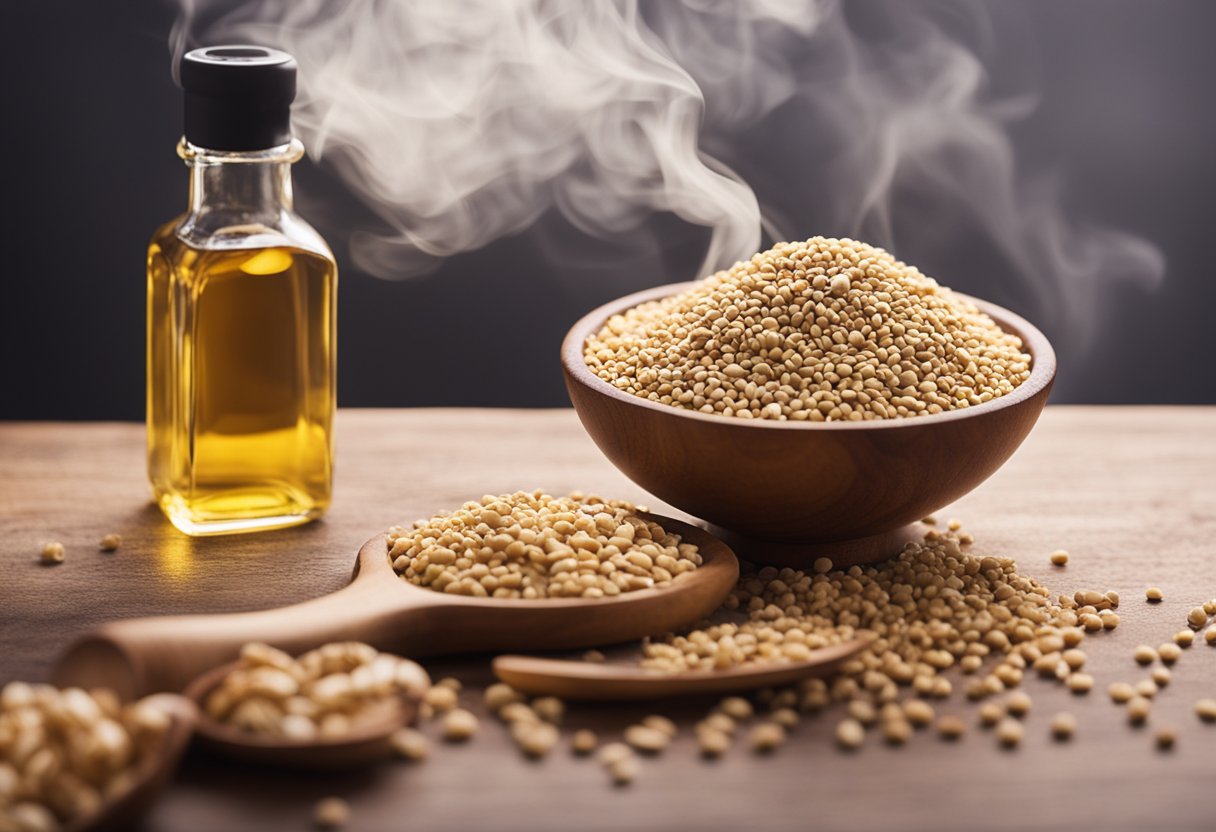
When it comes to cooking oils, the smoke point is an important factor to consider. The smoke point is the temperature at which the oil starts to smoke and break down, which can negatively affect the flavor and nutritional value of your food.
Sesame oil has a lower smoke point than peanut oil. According to Food Struct, sesame oil has a smoke point of around 350°F, whereas peanut oil has a smoke point of around 450°F. This means that peanut oil is better suited for high-heat cooking methods such as frying, while sesame oil is better suited for low-heat cooking methods such as sautéing or as a finishing oil.
It’s important to note that the smoke point can vary depending on the quality and purity of the oil. Refined oils generally have a higher smoke point than unrefined oils. Additionally, oils that have been partially or fully hydrogenated tend to have a higher smoke point, but are also less healthy than their unhydrogenated counterparts.
Difference in Flavor
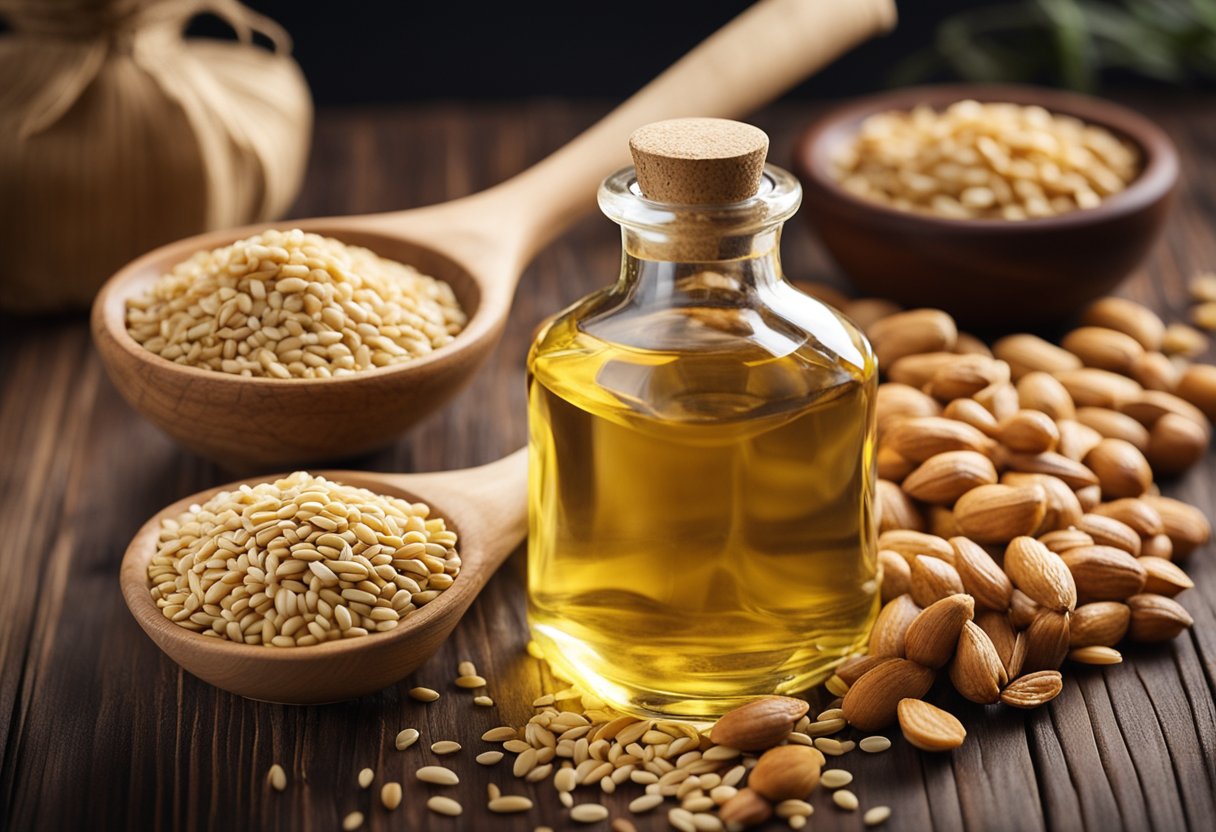
Both sesame oil and peanut oil have distinct flavors that can add depth to your dishes.
Sesame oil has a nutty and slightly sweet flavor that can be overpowering if used in excess. It is commonly used in Asian cuisine to add a rich flavor to stir-fries, marinades, and dressings. The flavor of sesame oil can vary depending on the type of sesame seeds used and the method of extraction. Toasted sesame oil has a more intense and smoky flavor compared to regular sesame oil.
Peanut oil, on the other hand, has a mild and neutral flavor that doesn’t overpower the other ingredients in a dish. It is a popular choice for frying due to its high smoke point and ability to withstand high temperatures. Peanut oil is commonly used in American and Chinese cuisine for deep-frying, pan-frying, and stir-frying.
When it comes to choosing between sesame oil and peanut oil, it ultimately depends on the flavor profile you are looking for in your dish. If you want a nutty and sweet flavor, go for sesame oil. If you want a neutral flavor that won’t overpower your dish, choose peanut oil.
Difference in Nutritional Composition
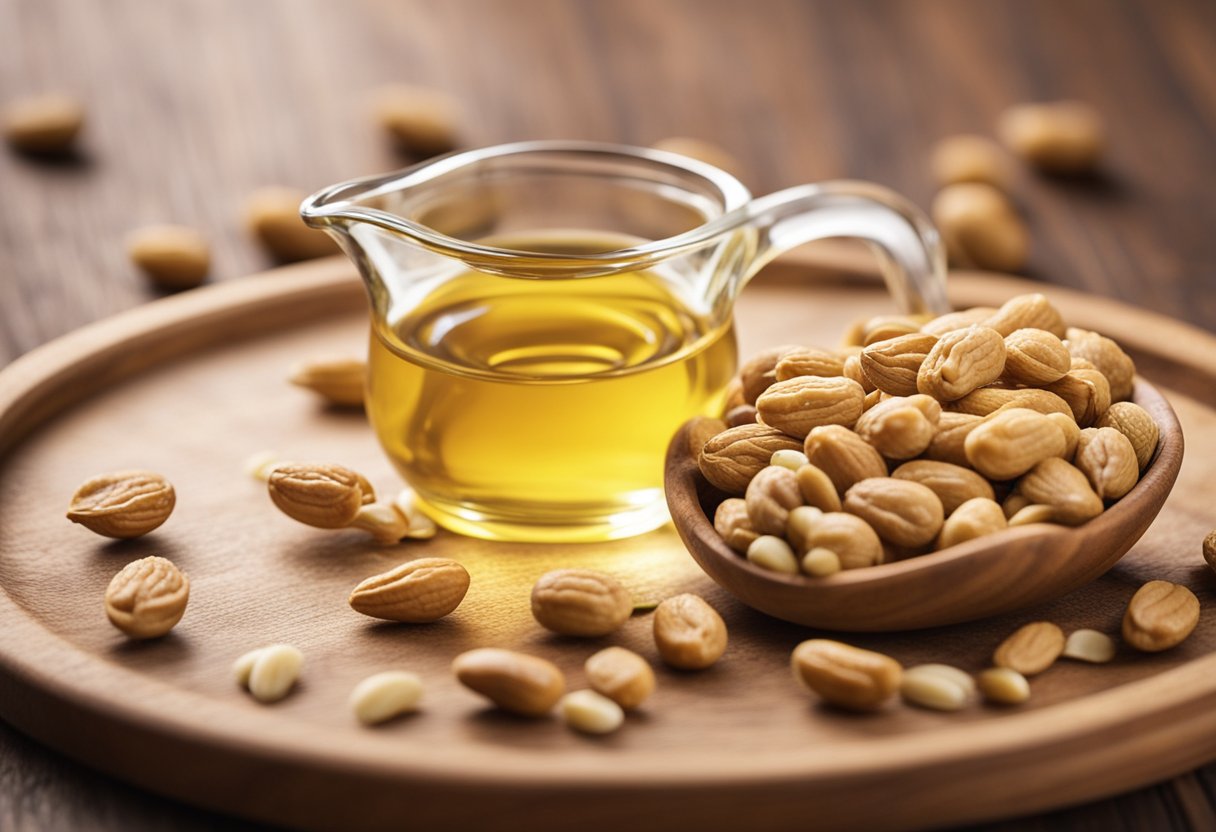
When it comes to nutritional composition, sesame oil and peanut oil have some differences. Here’s a breakdown of the main differences:
Fats
Peanut oil has a higher amount of monounsaturated fats and vitamin E than sesame oil. Sesame oil, on the other hand, is richer in polyunsaturated fats and vitamin K. Sesame oil also has a higher omega-6 to omega-3 ratio, which may not be ideal for those who already consume a lot of omega-6 fatty acids.
Calories
Both sesame oil and peanut oil have a similar calorie count, with around 120 calories per tablespoon. However, it’s important to note that consuming too much oil can lead to weight gain, so it’s best to use both oils in moderation.
Smoke Point
Peanut oil has a higher smoke point than sesame oil, which means it can be used for high-heat cooking methods such as frying. Sesame oil has a medium smoke point and should not be used for frying. Instead, it’s better suited for stir-frying, sautéing, and as a finishing oil.
Other Nutrients
Sesame oil contains more calcium, iron, and magnesium than peanut oil. It also has a higher amount of phytosterols, which may help lower cholesterol levels. Peanut oil, on the other hand, has more zinc and copper than sesame oil.
Difference in Health Benefits and Risks
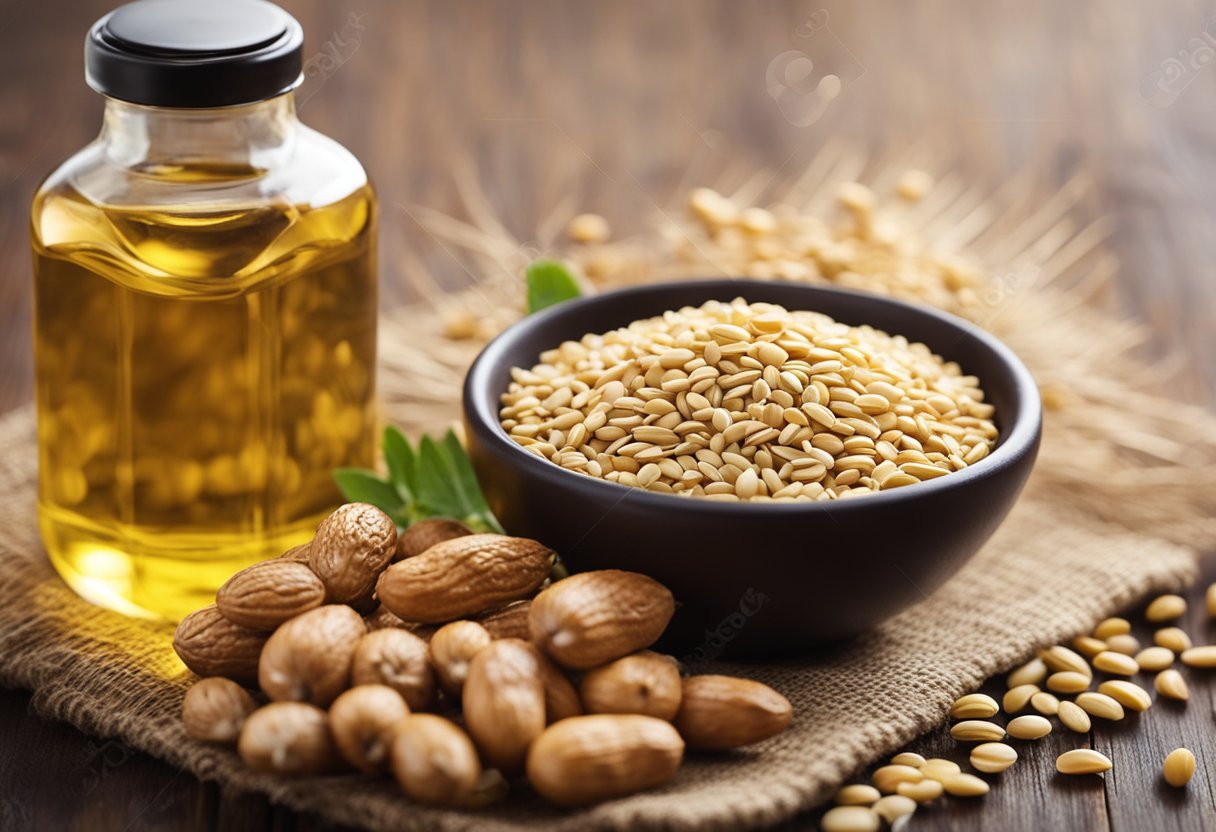
When it comes to health benefits and risks, both sesame oil and peanut oil have their own unique advantages and drawbacks. Here are some of the key differences:
Health Benefits
Sesame Oil
- Contains sesamol, an antioxidant that fights inflammation and oxidative stress.
- Rich in omega-6 essential fatty acids, which can help with heart health.
- May help lower blood pressure and improve cholesterol levels.
- Has antibacterial and antifungal properties.
Peanut Oil
- Rich in monounsaturated fats and vitamin E.
- Higher in saturated fats, which can raise cholesterol levels.
- Has a higher smoke point, making it a good choice for high-heat cooking methods like frying.
- Contains resveratrol, a compound that may help reduce the risk of heart disease and cancer.
Health Risks
Sesame Oil
- May cause allergic reactions in some people.
- High in calories and fat, so it should be used in moderation.
Peanut Oil
- May cause allergic reactions in some people.
- High in calories and fat, so it should be used in moderation.
- Contains omega-6 fatty acids, which in excess can lead to inflammation and contribute to certain health problems.
Difference in Price
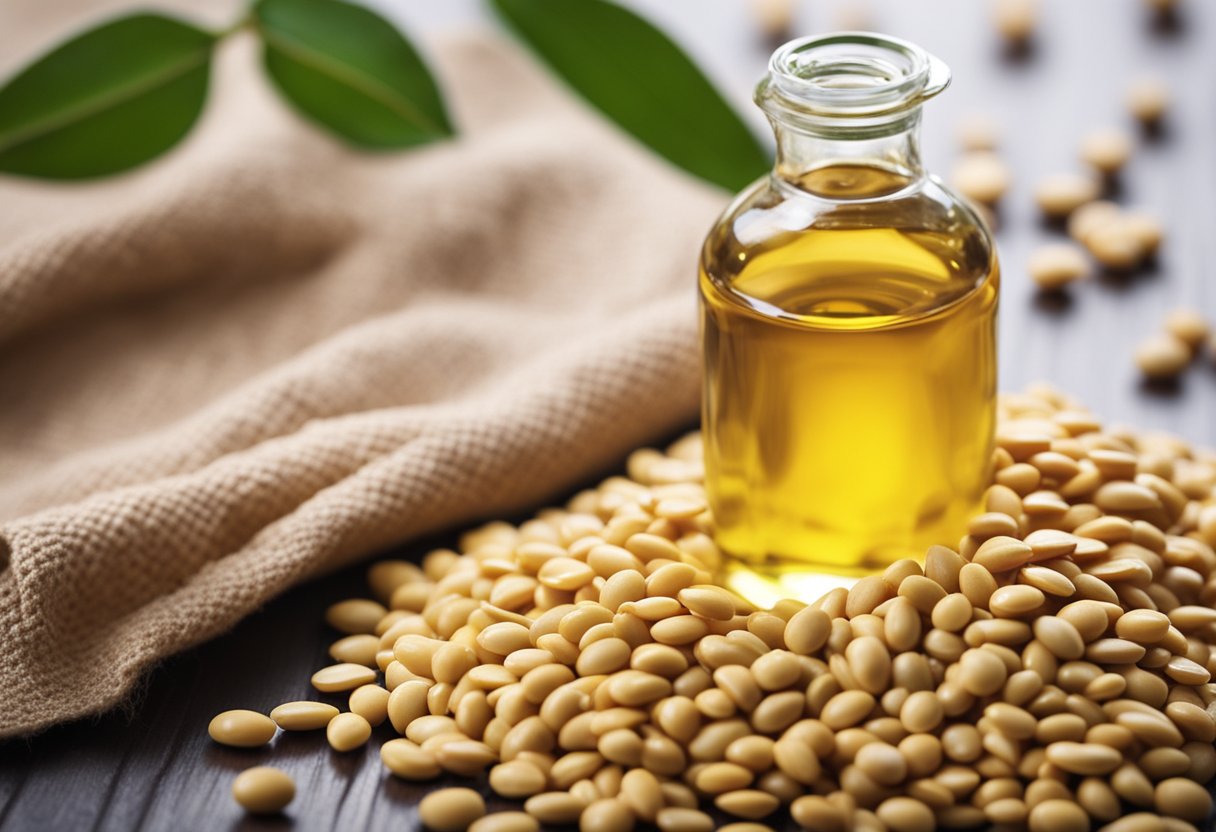
When it comes to price, peanut oil is generally more affordable than sesame oil. The cost of sesame oil is usually higher due to the more complex process of extracting oil from sesame seeds.
Peanut oil is widely available and can be found in most grocery stores. It is also one of the cheapest oils available, making it a popular choice for many households.
On the other hand, sesame oil is often considered a specialty oil and is not as widely available as peanut oil. It is commonly used in Asian cuisine and can be found in specialty stores or online. Due to its limited availability and complex extraction process, sesame oil is more expensive compared to peanut oil.
Difference in Availability
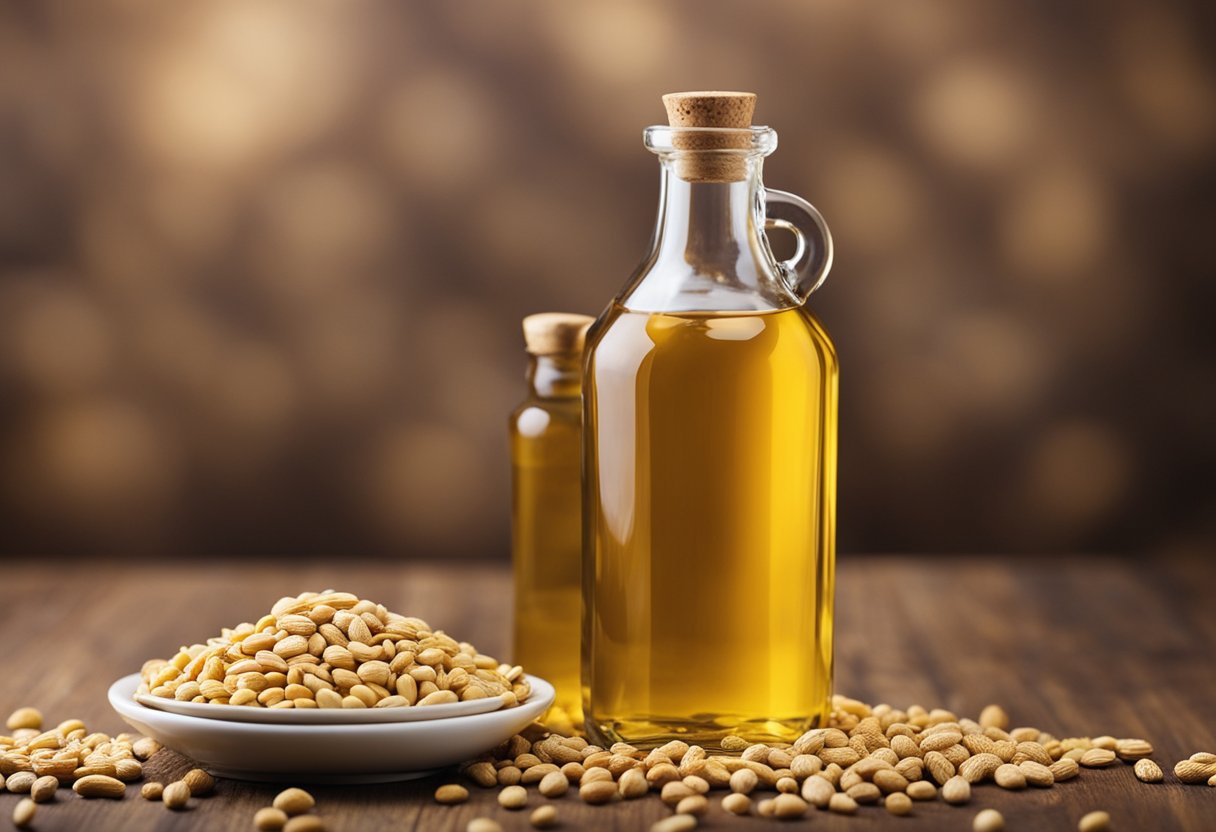
When it comes to availability, peanut oil is easier to find in most grocery stores compared to sesame oil. This is because peanut oil is more commonly used in cooking, especially in Western cuisine. You can find peanut oil in most supermarkets, health food stores, and online retailers.
On the other hand, sesame oil may be a bit harder to find, especially if you live in a rural area or a small town. However, you can still find sesame oil in most supermarkets, Asian grocery stores, and health food stores. If you can’t find it locally, you can always order it online from various retailers.
It’s worth noting that there are different types of sesame oil available, such as toasted sesame oil and untoasted sesame oil. Toasted sesame oil has a stronger flavor and aroma, while untoasted sesame oil has a milder taste. You may have to visit an Asian specialty store to find toasted sesame oil.
Can You Substitute Them in Recipes

If you’re out of sesame oil and need a substitute, peanut oil can be a good option. Both oils have a high smoke point, making them suitable for frying and sautéing. However, there are some differences in flavor and nutrition that you should keep in mind.
Sesame oil has a nutty, slightly sweet flavor that is distinct from peanut oil. It is often used in Asian cuisine to add flavor to stir-fries and dressings. In contrast, peanut oil has a neutral flavor that won’t overpower your dishes. This makes it a good choice for recipes where you want the other ingredients to shine.
Another difference between the two oils is their nutritional profile. Sesame oil is higher in monounsaturated and polyunsaturated fats, while peanut oil is higher in saturated fat. However, both oils are good sources of vitamin E, which is an antioxidant that may help protect your cells from damage.
When substituting peanut oil for sesame oil in a recipe, keep in mind that the flavor will be different. If you’re making a dish that relies heavily on the flavor of sesame oil, such as a sesame noodle salad, you may want to stick with sesame oil. However, if you’re making a dish where the flavor of the oil is less important, such as a stir-fry with lots of other flavorful ingredients, peanut oil can be a good substitute.
Can You Mix Them
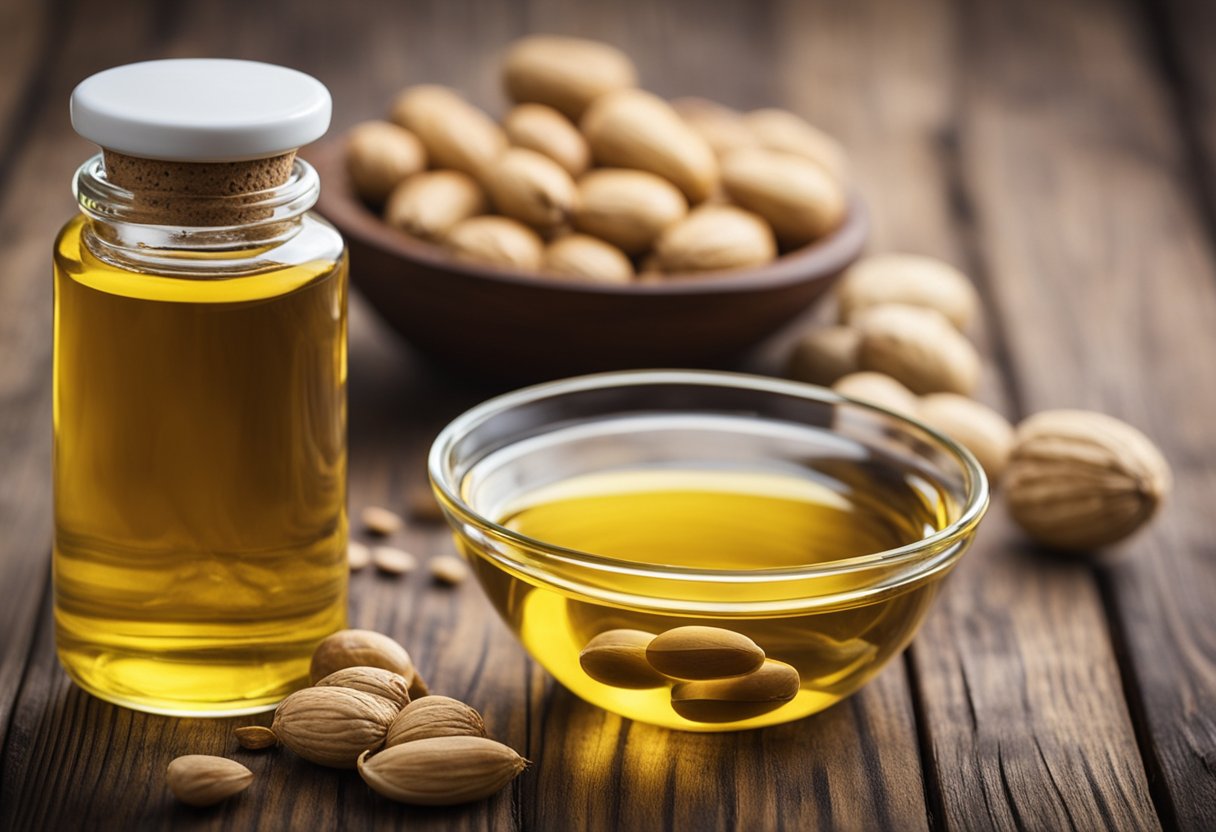
If you’re wondering whether you can mix sesame oil and peanut oil together, the answer is yes. In fact, many chefs and home cooks use a combination of oils to achieve a specific flavor profile or to take advantage of the unique properties of each oil.
When combining sesame oil and peanut oil, keep in mind that sesame oil has a strong, nutty flavor while peanut oil has a more neutral taste. If you’re looking to add a subtle nuttiness to your dish, use a higher ratio of sesame oil. If you want to keep the flavor more neutral, use a higher ratio of peanut oil.
It’s also important to note that sesame oil has a lower smoke point than peanut oil, so if you’re using the mixture for high-heat cooking, you may want to use a higher ratio of peanut oil to prevent the sesame oil from burning.
Difference in Storage
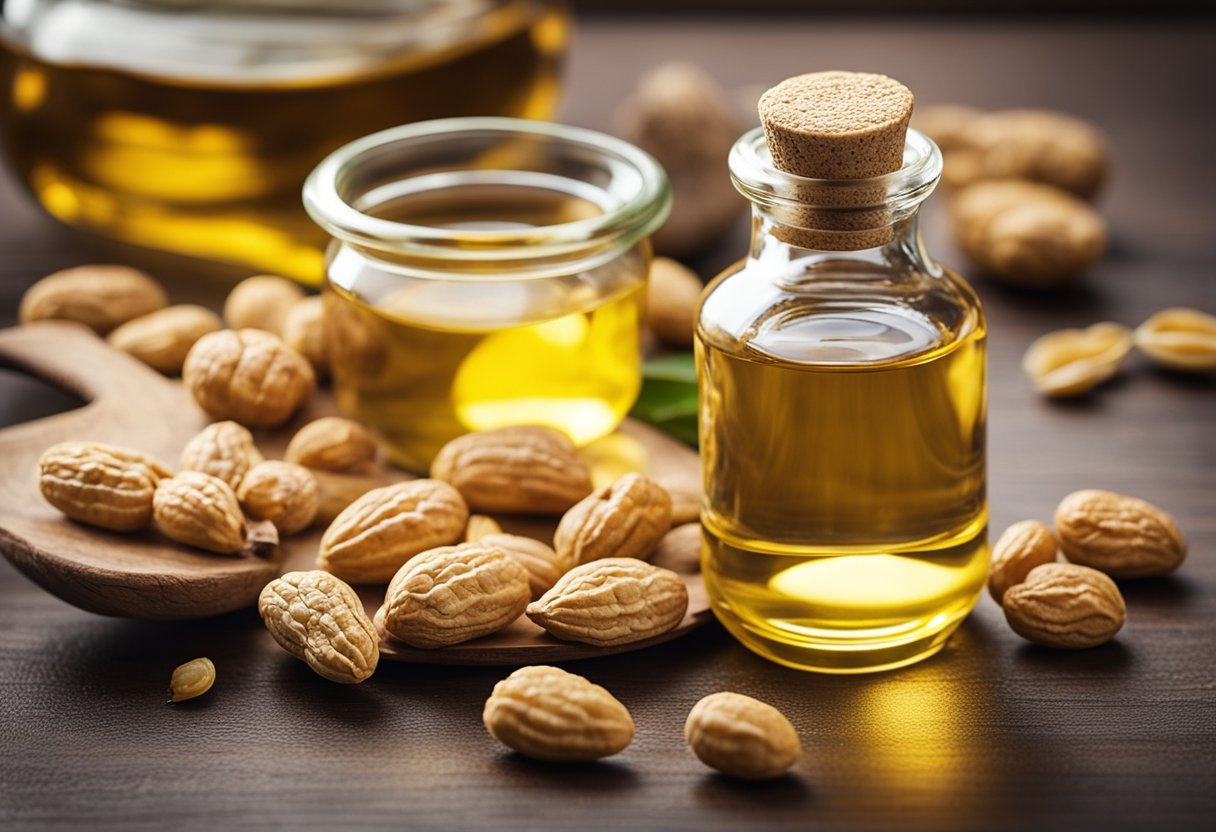
When it comes to storing oils, both sesame and peanut oil have different requirements. Here are some of the differences:
- Shelf life: Sesame oil has a shorter shelf life than peanut oil. Sesame oil can last up to six months if stored properly, while peanut oil can last up to a year.
- Storage temperature: Sesame oil should be stored in a cool, dry place away from sunlight. The ideal temperature range for sesame oil is between 50-70°F. On the other hand, peanut oil can be stored at room temperature, but it’s best to keep it in a cool, dark place.
Refrigeration: While it’s not necessary to refrigerate peanut oil, you can do so to extend its shelf life. However, refrigerating sesame oil is not recommended as it can cause the oil to solidify and become cloudy.
Container: Both sesame and peanut oil should be stored in airtight containers to prevent oxidation and contamination. It’s best to use dark glass bottles or metal containers to protect the oil from light.
It’s important to note that both sesame and peanut oil can go rancid if not stored properly. Rancidity can cause the oil to smell bad and taste bitter. So, make sure to store your oils correctly to ensure their freshness and quality.
How to Tell If the Oil Has Gone Bad
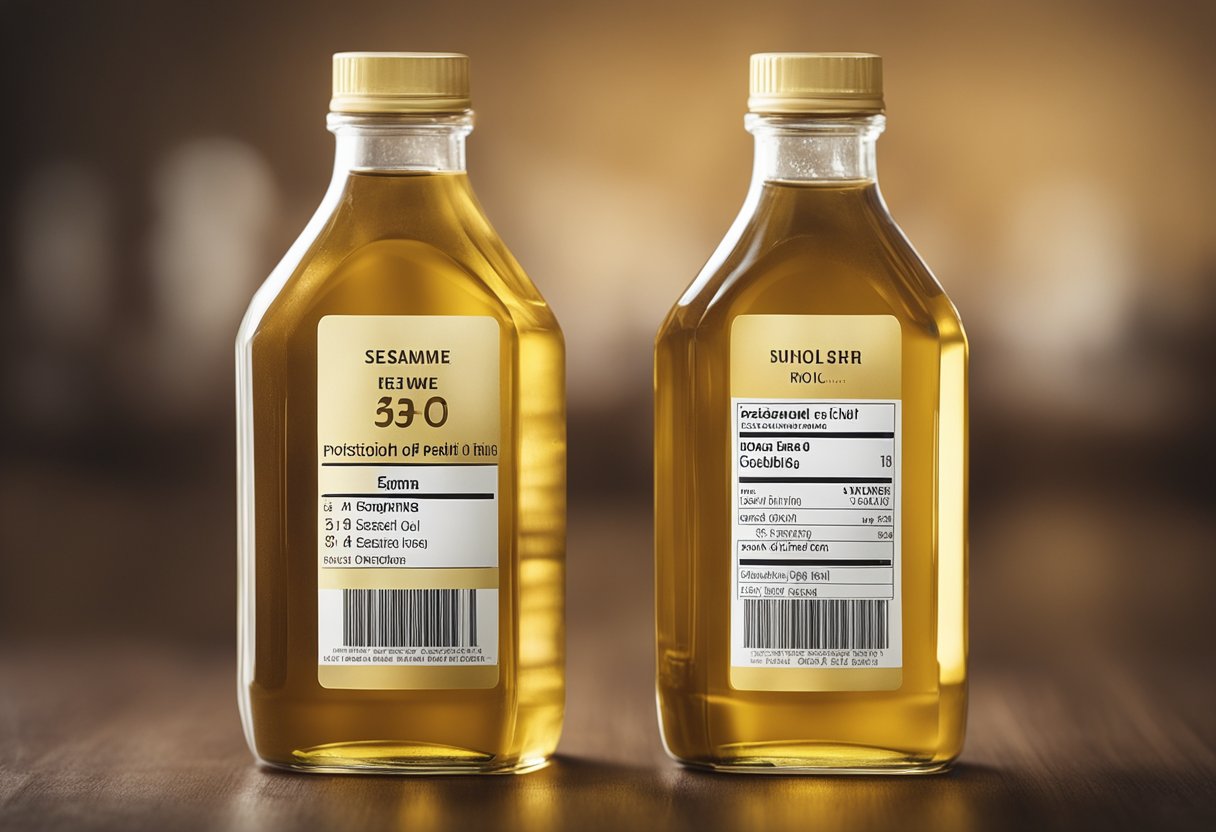
Both sesame oil and peanut oil can go bad over time. It’s important to know how to tell if the oil has gone bad to avoid using rancid oil in your cooking. Here are some signs that your oil may have gone bad:
Smell: If your oil has a sour or rancid smell, it may have gone bad. Fresh sesame oil has a nutty aroma, while fresh peanut oil has a mild, nutty scent. If you notice a strong, unpleasant odor, it’s best to dispose of the oil.
Taste: Rancid oil can have a bitter or unpleasant taste. If your oil tastes off or has a strange aftertaste, it may have gone bad.
Appearance: Fresh sesame oil is usually golden or amber in color, while fresh peanut oil is light yellow. If your oil appears darker or cloudy, it may have gone bad.
Texture: Rancid oil may have a thicker or stickier texture than fresh oil. If your oil seems thicker or more viscous than usual, it may have gone bad.
To avoid using rancid oil, it’s important to store your oil properly. Keep your oil in a cool, dark place away from heat and sunlight. Make sure the lid is tightly sealed to prevent air from getting in. Check the expiration date on the bottle and use the oil before it expires.
A Summary Table
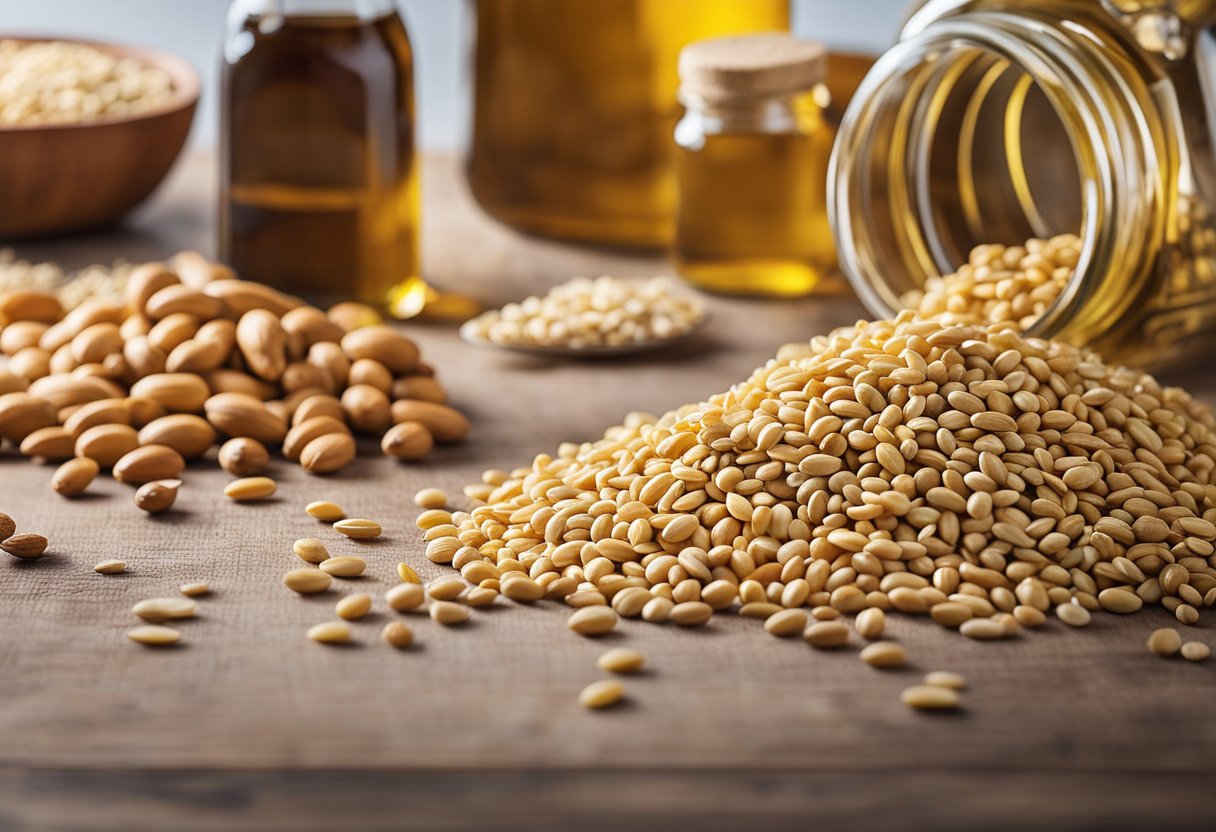
If you’re trying to decide between sesame oil and peanut oil, it can be helpful to look at the differences between the two. Here’s a table that summarizes some of the key differences between sesame oil and peanut oil:
| Criteria | Sesame Oil | Peanut Oil |
|---|---|---|
| Usage | Sesame oil is often used as a finishing oil or for stir-frying. | Peanut oil is versatile and can be used for frying, sautéing, and baking. |
| Smoke Point | Sesame oil has a lower smoke point of around 350°F, making it unsuitable for high-heat cooking. | Peanut oil has a higher smoke point of around 450°F, making it better suited for high-heat cooking. |
| Flavor | Sesame oil has a nutty, slightly sweet flavor that can add depth to dishes. | Peanut oil has a mild, neutral flavor that won’t overpower other ingredients. |
| Nutritional Composition | Sesame oil is higher in monounsaturated and polyunsaturated fats, which are considered healthy fats. It’s also a good source of vitamin E. | Peanut oil is higher in saturated fat, but it’s also a good source of vitamin E. |
| Health Benefits | Sesame oil is believed to have anti-inflammatory properties and may help lower cholesterol levels. | Peanut oil may help lower cholesterol levels and reduce the risk of heart disease. |
| Risks | Sesame oil may cause an allergic reaction in some people. | Peanut oil may cause an allergic reaction in people with peanut allergies. |
| Price | Sesame oil is generally more expensive than peanut oil. | Peanut oil is generally less expensive than sesame oil. |
| Availability | Sesame oil may be harder to find in some grocery stores. | Peanut oil is widely available in most grocery stores. |
Other Comparable Oils
While Sesame oil and Peanut oil are two popular cooking oils, there are other oils that are comparable in terms of health benefits and usage. Here are a few other oils that you may want to consider:
Avocado Oil
Avocado oil is a great option for high-heat cooking, as it has a high smoke point of around 520°F (271°C). It is also rich in monounsaturated fats, which can help reduce inflammation and improve heart health. Avocado oil is also a good source of vitamin E, which has antioxidant properties that can help protect your cells from damage.
Coconut Oil
Coconut oil has gained popularity in recent years due to its potential health benefits. It is high in saturated fats, which can increase your levels of HDL (good) cholesterol and help decrease your levels of LDL (bad) cholesterol. Coconut oil also contains lauric acid, which has antibacterial and antiviral properties. However, coconut oil has a relatively low smoke point of around 350°F (177°C), so it is not the best option for high-heat cooking.
Olive Oil
Olive oil is a staple in Mediterranean cuisine and is known for its health benefits. It is high in monounsaturated fats, which can help reduce inflammation and improve heart health. Olive oil is also a good source of antioxidants, which can help protect your cells from damage. However, olive oil has a relatively low smoke point of around 375°F (191°C), so it is not the best option for high-heat cooking.
Canola Oil
Canola oil is a popular cooking oil that is low in saturated fats and high in monounsaturated fats. It also has a relatively high smoke point of around 400°F (204°C), making it a good option for high-heat cooking. Canola oil is also a good source of omega-3 fatty acids, which can help reduce inflammation and improve heart health.
